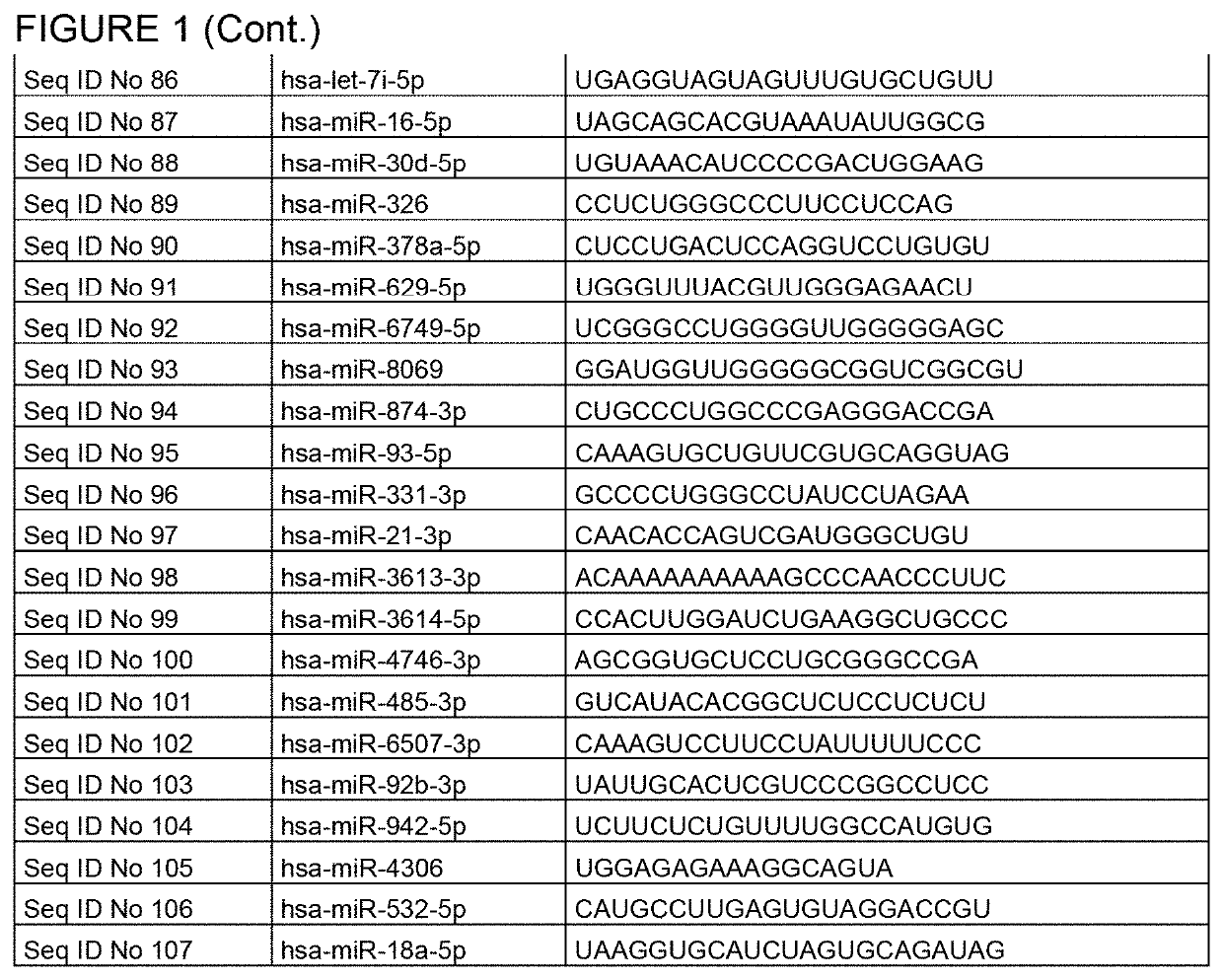Mirnas as biomarkers for parkinson's syndrome
- Summary
- Abstract
- Description
- Claims
- Application Information
AI Technical Summary
Benefits of technology
Problems solved by technology
Method used
Image
Examples
examples
[0383]The examples given below are for illustrative purposes only and do not limit the invention described above in any way.
example
1. Materials and Methods
1.1 Patient Samples
[0384]MiRNA profiles of 1,022 individuals were assessed. These included 510 disease cases and 512 healthy controls. The cases comprised 394 patients with a confirmed Parkinson's disease diagnosis. An additional 72 patients were diagnosed with a form of Parkinsonism, including 23 cases with Progressive Supranuclear Palsy, 14 cases with Parkinson Unspecified, 11 cases with Cerebrovascular Disease with Parkinsonism, 8 cases with Lewy Body Dementia, 7 cases with Cortical-basal Syndrome, 7 cases with Multiple System Atrophy and 2 cases with Drug-induced Parkinsonism. For the remaining 44 cases the medical examination for a final diagnosis was still ongoing. Blood samples (2.5 mL per patient) were collected in PAXgene tubes from said patients / controls. Controls are age and gender matched individuals without symptoms relating to Parkinson's disease or Parkinsonism.
[0385]Prior to RNA extraction, PAXgene tubes were thawed overn...
PUM
| Property | Measurement | Unit |
|---|---|---|
| Fraction | aaaaa | aaaaa |
| Digital information | aaaaa | aaaaa |
| Digital information | aaaaa | aaaaa |
Abstract
Description
Claims
Application Information
 Login to View More
Login to View More - R&D Engineer
- R&D Manager
- IP Professional
- Industry Leading Data Capabilities
- Powerful AI technology
- Patent DNA Extraction
Browse by: Latest US Patents, China's latest patents, Technical Efficacy Thesaurus, Application Domain, Technology Topic, Popular Technical Reports.
© 2024 PatSnap. All rights reserved.Legal|Privacy policy|Modern Slavery Act Transparency Statement|Sitemap|About US| Contact US: help@patsnap.com










